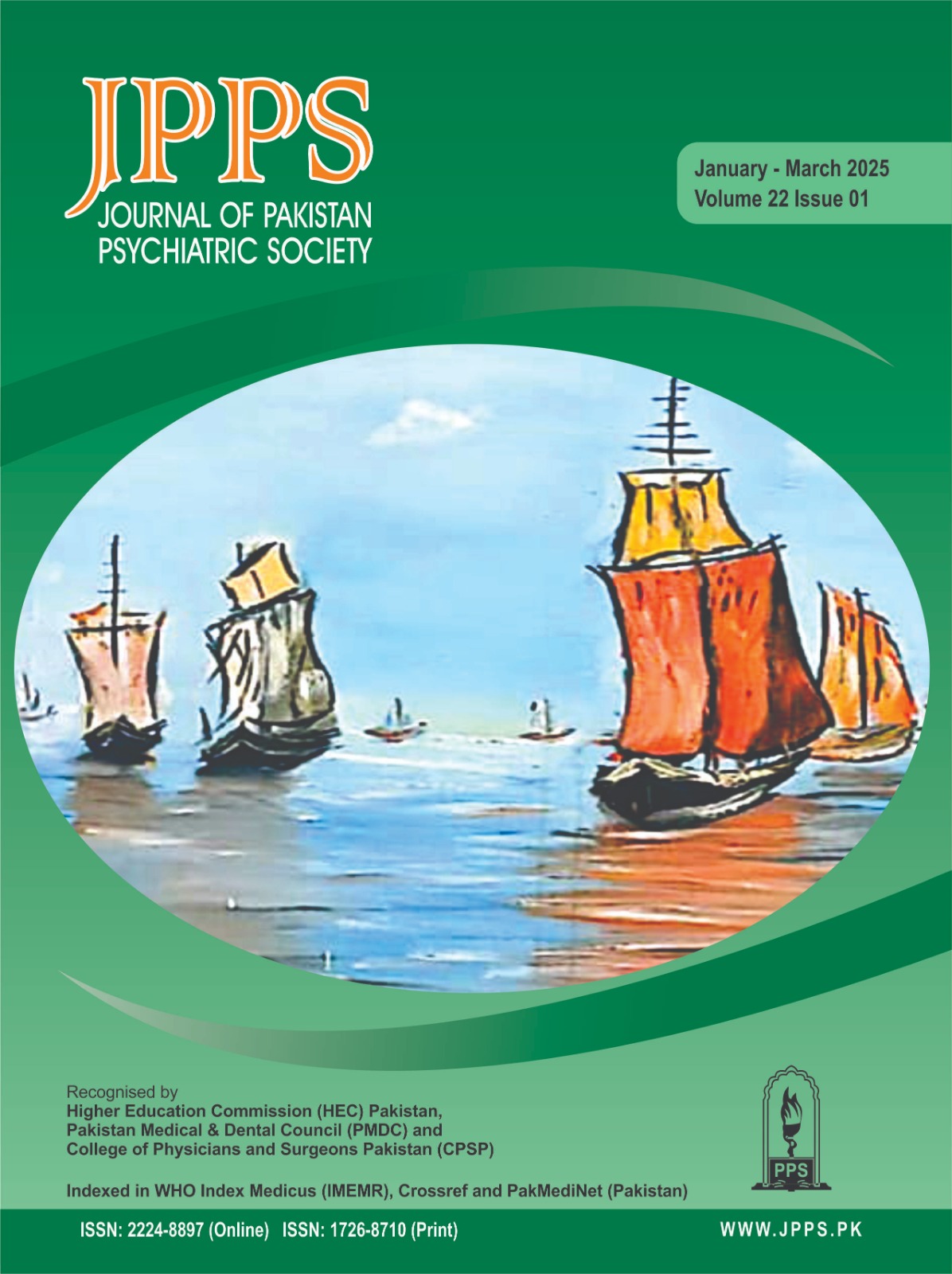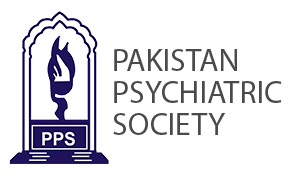ASSESSING THE CHANGE IN ANXIETY OF PATIENTS BEFORE AND AFTER THE ELUCIDATION OF DENTAL PROCEDURE AT A TERTIARY CARE HOSPITAL: A CROSS-SECTIONAL STUDY
Abstract
OBJECTIVES
To compare the levels of anxiety among patients prior to and subsequent to having a description of dental procedures, and also to examine differences in patient anxiety between various dental departments.
STUDY DESIGN
Cross-sectional research
PLACE AND DURATION OF STUDY
The research was conducted at Foundation University College of Dentistry & Hospital in Islamabad, Pakistan for a period of 3 months from March 2023 to May 2023.
METHOD
There were two hundred and thirty-eight (238) patients who took part in the research. The patients filled in a Proforma consisting of 2 parts: the initial section demonstrated demographic and the portion followed included the Beck Anxiety Inventory (BAI) scale one before explaining the procedure and one after it.
RESULTS
Using the Wilcoxon Test, there is high evidence to determine that the intervention (elucidation) had a significant impact in decreasing anxiety levels. Prior to procedure explanation, 65.5 % of patients had low anxiety. Moderate anxiety was exhibited by 31.9%, while 2.5% had severe level of anxiety. But upon explanation, severe anxiety decreased significantly at 0.2%. A drop to 15.1% of moderate anxiety, and most i.e., 83.2% of the participants were low-anxious. This difference is indicative of the positive effect procedure explanation has on minimizing anxiety
CONCLUSION
Our research illustrates that educating patients about dental treatments in a transparent manner helps a great deal in reducing anxiety. By dispelling patient anxieties and maintaining openness, healthcare professionals can increase the comfort of patients during dental treatment.
Downloads
References
American Psychiatric Association. Diagnostic and statistical manual of mental disorders. 5th ed. Arlington (VA): American Psychiatric Publishing; 2013.
Szymańska JI, Rosiak J. Strategy for dealing with anxiety among adult patients of a dental office. Medical Studies/Studia Medyczne. 2024;40(4):381-386. doi:10.5114/ms.2024.142970.
Silveira ER, Cademartori MG, Schuch HS, Armfield JA, Demarco FF. Estimated prevalence of dental fear in adults: A systematic review and meta-analysis. J Dent. 2021;108:103632. doi:10.1016/j.jdent.2021.103632
Sajid F, Hameed S, Azeem H, Anwaar A, Khan J, Ijaz W. Dental anxiety among children aged 5 to 15 years visiting a teaching dental hospital in Abbottabad, Pakistan. Journal of Khyber College of Dentistry. 2024;14(02):37-40. doi: https://doi.org/10.33279/jkcd.v14i2.608
Yemenoğlu H, Köse O, Cepni P. Analysis of dental anxiety levels and oral health-related quality of life of patients
attending a periodontology clinic. HRU International Journal of Dentistry and Oral Research. 2024;4(2):38-46. doi: https://doi.org/10.61139/ijdor.1497831
McGrath C, Bedi R. The association between dental anxiety and oral health-related quality of life in Britain. Community Dent Oral Epidemiol. 2004;32(1):67-72. doi:10.1111/j.1600-0528.2004.00119.x
Deepa A, Susmitha KV, Katuri KK, Boyapati R, Adurty C, Dhulipalla R. Association of anxiety in patients visiting dental institution. Journal of Interdisciplinary Dentistry. 2024; 14(2):92-96. doi: 10.4103/jid.jid_65_23
Buldur B. Pathways between parental and individual determinants of dental caries and dental visit behaviours
among children: Validation of a new conceptual model. Community Dent Oral Epidemiol. 2020;48(4):280-287. doi:10.1111/cdoe.12530
Piedra-Hernández L, Batista-Cárdenas D, Gómez-Fernández A, Ramírez K. Dental anxiety and oral health related quality of life before and after non-surgical p e r i o d o n t a l t r e a t m e n t . C l i n O r a l I n v e s t i g .
;27(9):5459-5474. doi:10.1007/s00784-023-05165-1
Kassem El Hajj H, Fares Y, Abou-Abbas L. Assessment of dental anxiety and dental phobia among adults in L e b a n o n . B M C O r a l H e a l t h . 2 0 2 1 ; 2 1 ( 1 ) : 4 8 . doi:10.1186/s12903-021-01409-2
Brahm CO, Lundgren J, Carlsson SG, Nilsson P, Corbeil J, Hägglin C. Dentists' views on fearful patients. Problems and promises. Swed Dent J. 2012;36(2):79-89.
Alenezi AA, Aldokhayel HS. The impact of dental fear on the dental attendance behaviors: A retrospective study. J Family Med Prim Care. 2022;11(10):6444-6450. doi:10.4103/jfmpc.jfmpc_1030_22
Lin CS, Lee CY, Chen LL, Wu LT, Yang SF, Wang TF. Magnification of fear and intention of avoidance in nonexperienced versus experienced dental treatment in a d u l t s . BMC Oral Health. 2 0 2 1 ; 2 1 ( 1 ) : 3 2 8 . doi:10.1186/s12903-021-01682-1
Moore R. Trusting the Dentist-Expecting a Leap of Faith vs. a Well-Defined Strategy for Anxious Patients. Dent J (Basel). 2022;10(4):66. doi:10.3390/dj10040066
Beck AT, Epstein N, Brown G, Steer RA. An inventory for measuring clinical anxiety: psychometric properties. J
C o n s u l t C l i n P s y c h o l . 1 9 8 8 ; 5 6 ( 6 ) : 8 9 3 - 8 9 7 . doi:10.1037//0022-006x.56.6.893
Munir MB, Siddique H, Saeed F. Factors causing Dental Fear in Adult Patients during and after Dental Treatment: A Cross Sectional Study in Punjab Dental Hospital Lahore. Pakistan Journal of Medical & Health Sciences. 2018;12(3):1040-1045.
Humphris GM, Dyer TA, Robinson PG. The modified dental anxiety scale: UK general public population norms in 2008 with further psychometrics and effects of age. BMC Oral Health. 2009;9:20. doi:10.1186/1472-6831-9-20
Winkler CH, Bjelopavlovic M, Lehmann KM, Petrowski K, Irmscher L, Berth H. Impact of Dental Anxiety on Dental Care Routine and Oral-Health-Related Quality of Life in a German Adult Population-A Cross-Sectional Study. J Clin Med. 2023;12(16):5291. doi:10.3390/jcm12165291
Yildirim M, Akbal S, Turkoglu M. The effect of selfaffirmation on anxiety and perceived discomfort in
patients who have undergone open-heart surgery. A randomized controlled trial. Appl Nurs Res. 2023;72:151687. doi:10.1016/j.apnr.2023.151687
49. Dye J, Kennedy R. [Internet] [thesis]. Peri-operative Patient Education: What Methods o f Patient Education Will Better Prepare Patients for Their Surgical Experience; and Will Better Preparation Result in Increased Patient Satisfaction. University of Michigan; 2008. Available from: https://deepblue.lib.umich.edu/bitstream/handle/2027.42/117701/Dye.pdf?sequence=1
DiMatteo MR. Social support and patient adherence to medical treatment: a meta-analysis. Health Psychol. 2004;23(2):207-218. doi:10.1037/0278-6133.23.2.207
Lee M, Song Y, You M, Park SY, Ihm J. Dentists' attitudes toward patient-centered care and its predictors: a crosssectional study in South Korea. BMC Oral Health. 2023;23(1):75. doi:10.1186/s12903-023-02791-9
Copyright (c) 2025 Journal of Pakistan Psychiatric Society

This work is licensed under a Creative Commons Attribution-NonCommercial 4.0 International License.
Copyright © JPPS. Published by Pakistan Psychiatric Society
Licensing: This work is licensed under Creative Commons Attribution-NonCommercial 4.0 International License
Readers may “Share-copy and redistribute the material in any medium or format” and “Adapt-remix, transform, and build upon the material”. The readers must give appropriate credit to the source of the material and indicate if changes were made to the material. Readers may not use the material for commercial purposes. The readers may not apply legal terms or technological measures that legally restrict others from doing anything the license permits.






.png)









